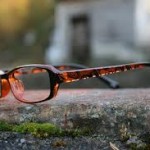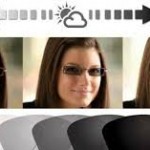
High index lenses are great, but they’re not for everybody. Prescriptions That Aren’t Right for High Index It’s generally true that high index lenses are going to be thinner, lighter, and better than standard plastic or polycarbonate lenses, but sometimes they’re not right for you. For instance, if you’re getting prescription safety glasses or prescription […]

High index lenses are some of the highest quality lenses you can order. They are appropriate for most prescriptions, depending on what you want out of your lenses, but there are some prescriptions that simply don’t warrant high index. “High Enough” to Consider High Index Lenses If you can see well without glasses, for instance, […]

High index lenses have several qualities that set them apart from other lens materials. Lens Materials and Scratch Resistance Their index of refraction, or their ability to bend light efficiently, is due to their density compared to “standard” lens materials. They are lighter, thinner, and more advanced than standard lens materials. They also have some […]

High index lenses can be made of a variety of plastic and glass materials. High index plastic is a plastic material that is denser than standard plastic or polycarbonate. High index glass is similar in that it’s made of a glass material that is denser than crown glass. The increase in density results in the […]

Like most lens materials, high index lenses can be made with prism and, as would be expected, the lenses are thinner than standard lens materials. High Index Lenses with Prism There are positives and negatives to getting high index lenses with prism correction. The pluses are the lenses’ thinness, lightness, and looks. The downsides are […]

When most of us think about high index lenses, we automatically assume that they’re better than the “standard” or “low index” lenses at the eye doctor’s office. Advantages of Low Index over High Index Lenses These standard lenses, though, are sold to a large portion of eyeglasses wearers worldwide, and they’re worn in all sorts […]

The high index of a lens is connected to most of the qualities worth considering when shopping for a lens material. Reflections, Density, and Index Index of refraction, Abbe number (and optical clarity), amount of glare, thinness, weight, scratch resistance, and overall aesthetics are all tied to the lens’s index. If you are shopping for […]

Abbe number is a very important and often-overlooked lens quality that is particularly relevant for high index plastic lenses. Abbe Number and Color Aberration A general rule of thumb when it comes to lens materials is the higher the index, the denser the lens. As lenses become denser and more efficient at bending light (which […]

People who have heard of high index glass and high index plastic lens materials may wonder which is better for them. Each material has its strengths and its weaknesses, and what may be right for one person will not be right for everybody. If you are deciding between high index glass and high index plastic […]

High index lenses are intended to help make your lenses thinner, and double concave and double convex high index lenses are designed to make your lenses even thinner still. Most lenses are made using a “lens blank” with a set curvature on the front, which is generally either convex or flat. When the prescription is […]
© RX Safety - Developed by ISEA Media & Cosmick Technologies